

FORGE, SHAPE, GATHER: Twenty Years of the Craft Research Fund
by Jenni Sorkin
Jenni Sorkin, PhD, is Professor and Chair of History of Art & Architecture at University of California, Santa Barbara. She received Craft Research Fund grants in 2007 and 2012.
FORGING New Ideas
The considerable expansion of historically grounded and rigorous craft scholarship in the 21st century is easily attributable to the establishment of the Center for Craft’s Craft Research Fund (CRF). This year marks the 20th anniversary of its founding, showcasing the distribution of $1.9 million to 255 projects to date. The Craft Research

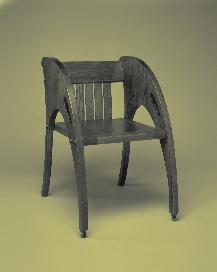
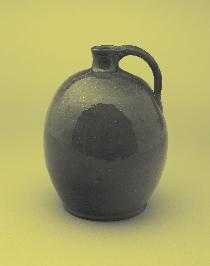
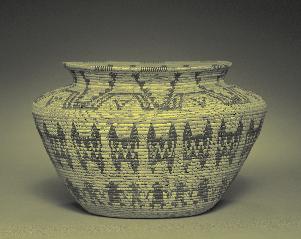
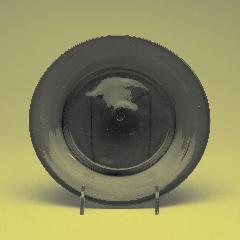
Fund is a grant awarded to U.S.–based scholars, curators, advanced graduate students, and independent researchers engaged in knowledge production on topics in U.S. craft history, material culture, and decorative arts. These categories have historically centered on the five traditional craft disciplines—ceramics, fiber, glass, metals, and wood—researching handmade and machine-assisted artworks, nonfunctional and utilitarian alike. Yet the CRF has expressly promoted and supported projects that delve deeply into the cultural, economic, and sociopolitical histories that surround not just their making, but also their reception and circulation.
The groundwork for the grant was laid at the Center for Craft’s first Craft Think Tank in 2002, a program that would become a regular gathering of invited curators, artists, and educators to develop recommendations and strategies for “how to place craft in a larger cultural context” focusing on academia, museums, and makers.1 This session also hatched the idea for what would become the field’s first peerreviewed journal, The Journal of Modern Craft, and the first U.S.
1. “Proceedings of the North Carolina Summit Retreat on Craft.” Craft Think Tank Report, March 21-24, 2002. https:// cdn.prod.website-files.com/5b1fc25f1b176048a523d86e/ 5be1ca1d403be20fcebd28a6_2002Report.pdf
textbook for studio craft, Makers: A History of American Studio Craft . 2 Further expanding and refining these directions, the third annual Craft Think Tank in 2004, was charged with developing an intentional protocol for furthering the academic study and recognition of U.S. craft across art and art history departments, as well as promoting both historical and contemporary iterations of the field. 3 This session led to the creation of guidelines for a three-year pilot grant program, the Craft Research Fund, as well as a recommendation to support papers on craft at the annual College Art Association conference, a major gathering for university-based artists and art historians.4 In combined art and art history departments nationwide, there has long been a mismatch between the specializations on offer, underscoring craft’s long-standing exclusion from dominant narratives of modern and contemporary art. Craft history was not valued so it was rarely taught, leaving many makers and students to feel overlooked and nearly invisible, especially to their own colleagues and peers. Fueled by insecurity, the gaps in knowledge were sometimes filled in by a masculine bravado (of the “we don’t need no education” sort) or an inherited nepotism
2. What the Center could not have anticipated was the rise of fully online courses and teaching platforms within a few short years of its publication, and the permanence of assigning piecemeal free pdfs instead of textbooks. See Janet Koplos and Bruce Metcalf, Makers: The History of Studio Craft. (Raleigh: University of North Carolina Press, 2010).
3. “Creating a Craft Research Fund to Expand Scholarly Research on American Studio Craft.” Craft Think Tank Revised Report, March 25-27, 2004. https://cdn.prod.website-files. com/5b1fc25f1b176048a523d86e/5be1c7ed403be2632cbd26dd_ThinkTankReport-2004.pdf
4. The Critical Craft Forum started as a Facebook group and later became an affiliated CAA group in 2011.
(only hiring or showing the students of certain famed makers) that left students alienated from their own disciplinary history and its unique forms of inquiry.
Several generations later, contemporary craftspeople find themselves in the difficult and imbalanced position of doubleteach: responsible for transmitting the raw power of their skill and material knowledge—the job they were hired to do—while simultaneously encumbered by teaching their medium’s history, yet with little formal training in the pedagogy of art history to do so. For the lone specialist on a small faculty, as is often the case at liberal arts and community colleges, this is an especially time-consuming and egregious task. But at research and teaching universities too, as budgets stretch thinner, faculty are frequently asked to teach beyond their specialization.
Established in 2005, the Craft Research Fund’s annual source of financial support has enriched the field immeasurably: seeding scholarship, research, and exhibition-making.
For contemporary makers and scholars alike, this institutional grant has accomplished widespread visibility, academic legitimacy, and a strong sense of pride for past and future endeavors. Through the presence of a single blind peer-reviewed process, the grantees are selected by an annually rotating committee, strongly rejecting the field’s previous insularity.
The Center for Craft has become the premier funding agency in the field of American craft. Through the CRF, it has continuously offered meaningful financial support across three distinctive groups of awardees: established professionals, emerging scholars, and artists.5
Undoubtedly, this has created an expansive library of published scholarship: peer-reviewed books and journal articles, museum exhibitions and their cognate exhibition catalogs, and PhD dissertations and MA theses. But a simultaneous benefit has been equally meaningful: providing a visible network, an active community of scholars, curators, and artists who became—and remain— recognizable to each other, laying the groundwork for future collaborations, dialogues, and debates.
5. The Travel Grant ran from 2005–2017; the Graduate Grant from 2005–2020; the Exhibition Grants from 2012–2024; the Artist Fellowship from 2020–2023. The Project Grants have run continuously since 2005. The Graduate, Exhibition and Project grants were combined into one category beginning in 2025. The Project Grants were initially aimed at working professionals, while the Graduate Grant was a way to initiate a separate category in which there would be no cross-competition.
Golden Age: Then or Now?
For most of the post-war boom period known as the Studio Craft Movement, exhibition catalogs were rarely published, unless they coincided with a major group exhibition, such as Craft Multiples (1975), the three-year traveling show inaugurated by the Renwick Gallery of Art in Washington D.C.6 A juried exhibition that examined the idea of production work, or objects in multiple, made by designer-craftsmen running small shops or businesses nationwide, an exhibition catalog of a mere 64 pages was produced, with a short, three-page introduction by Renwick Director Lloyd Herman and a single-page jurors’ statement. With so little text, the catalog reads more like a sales directory, with black and white photos of each object represented. Out of a whopping 2,379 total entries, only 133 objects made by 126 total craftspeople were chosen: 89 men and 37 women, nearly all white, with a smattering of Asian-American craftsmen. Such a gender and racial imbalance is
6. Craft Multiples (Washington D.C.: Renwick Gallery, 1976). Craft Multiples was organized by Lloyd Herman, the Renwick’s inaugural curator, and ran from July 4, 1975, to February 16, 1976. The show traveled throughout the United States, from March 1976 to March 1979. The objects included within the exhibition were chosen by a three-person jury comprised of Lois Moran, director of research and education, American Crafts Council, New York; Hedy BacklinLandman, director of the Danforth Museum, Framingham, MA; and Herman.
striking, yet endemic to the era, even as women were at the helm of the field’s monthly prose—Aileen Osborne Webb, Lois Moran, and Rose Slivka—keepers of Craft Horizonturned-American Craft’s flame.7
Due to the proliferation of exhibitions and job opportunities, the Studio Craft era has often been described as a Golden Age, but it was only so for white male artists, who benefited enormously from a combination of the GI Bill and the rapid expansion of art departments within higher education hiring. A half-century later, U.S. craft has caught up: It is finally replete with opportunities for women, nonbinary, queer, and BIPOC artists and makers. As such, the CRF has overwhelmingly been awarded to women, nonbinary, queer, and BIPOC scholars, curators, makers, and historians. We can map this progression by considering some of the scholarly forms to which grants have been awarded, and which continue to shape knowledge production in the field. These fall into five main categories, or as I will term them: the case study, building institutional knowledge, historical reenactment, craft within communities, and craft is queer.
7. Craft Horizons ran from 1941 to 1979, established as the periodical of the national craft organization, Handcraft Cooperative League of America, which changed its name to American Craftsmen’s Cooperative Council. In 1979, Craft Horizons updated its name to American Craft, the imprint of the newly renamed American Craft Council.
SHAPING Methodologies
The Case Study
The Case Study engages a single artist, or a grouping of artists in a particular medium, chronology, or geographical boundary, to enlarge and examine a set of pressing issues around craft production, legacy, innovation, and pedagogy. By a wide margin, this is a dominant theme across many awardees: theses, dissertations, and many single-artist or thematic exhibitions. Across the 20-year period of grants, there has been a strong split between the Studio Craft–influenced focus on individual craftspeople to a broader desire to map trends across the field through thematic projects and group exhibitions. This trend is clear from an accounting of the first two years of the grant alone. In the Project class, curator Davira Taragin (CRF ’05) received a grant for an exhibition on Viola Frey; critic Ellen Paul Denker (CRF ’05) for an article on Aileen Osborn Webb published in 2013; curator Cindi Strauss (CRF ’05) for an exhibition on avantgarde jewelry; curator Alexa Griffith 9
Winton (CRF ’06) for an exhibition on Dorothy Liebes; Peter Held (CRF ’06) for an exhibition on David Shaner; Harold B. Nelson (CRF ’06) for an exhibition on enamel work; and Lena Vigna (CRF ’06) for an exhibition on contemporary iterations of lacemaking.8
Among funded books, there are also several prominent examples of the case study phenomena, including Beverly K. Brandt’s The Craftsman and the Critic: Defining Usefulness and Beauty in Arts and Crafts–Era Boston (2009) (CRF ’05), which examines the Society of Arts & Crafts in Boston, the earliest and most influential American Arts & Crafts organization, in relation to its widespread influence nationally, establishing interconnectivity between 19th-century design reformers— thinkers—and the era’s artists.9 There is also Glenn
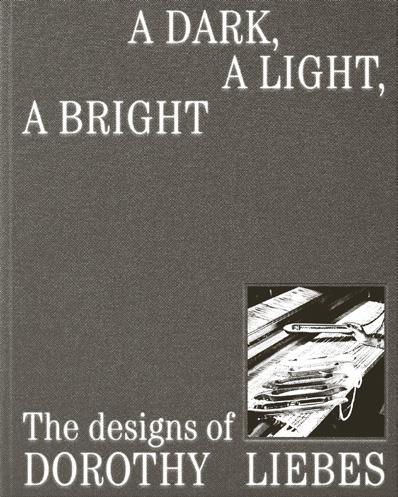
8. See the following museum catalogs: Davira S. Taragin, Bigger, Better, More: The Art of Viola Frey (New York: Hudson Hills, 2009); Cindi Strauss, Ornament as Art: Avant-Garde Jewelry from the Helen Williams Drutt Collection (Stuttgart, Germany: Arnoldsche Verlagskontor, 2007); Alexandra Griffith Winton, A Dark, A Light, A Bright: The Designs of Dorothy Liebes (New Haven and London: Yale University Press, 2023); Peter Held, Following the Rhythms of Life: The Ceramic Art of David Shaner (Tempe, AZ: Arizona State University Museum, 2007); Harold Nelson and Bernard Jazzar, Playing with Fire: Masters of Enameling in America, 1930–1980. (Long Beach, CA: Long Beach Museum of Art, 2006). See also the sole article in this grouping: Ellen Paul Denker, “Aileen Osborne Webb and the Origins of Craft’s Infrastructure.” Journal of Modern Craft v. 6. n. 1 (2013), 11-34.
9. Beverly K. Brandt, The Craftsman and the Critic: Defining Usefulness and Beauty in Arts and Crafts–Era Boston (Amherst, MA: University of Massachusetts Press, 2009).
Adamson’s Thinking Through Craft (2011) (CRF ’07), which thematizes ideas such as the pastoral and the amateur in post-1960s artistic production as a way to create a comparative framework between studio craft histories and conceptual art histories, or Ezra Shales’s Made in Newark: Cultivating Industrial Arts and Civic Identity in the Progressive Era (2010) (CRF ’07), which considers the legacy of Newark Free Public Library Director John Cotton Dana’s radical programming through the lens of craft and material culture histories.10 Or my own Live Form: Women, Ceramics, and Community (2016) (CRF ’07), which has become a touchstone for thinking about craft through a feminist lens.11
Building Institutional Knowledge
Aimed squarely at diversifying the inherited whiteness of the studio craft canon, building institutional knowledge is a form of resistance that defies and reworks received narratives
10. Glenn Adamson, Thinking Through Craft (London: Bloomsbury, 2011) and Ezra Shales, Made in Newark: Cultivating Industrial Arts and Civic Identity in the Progressive Era (New Brunswick, NJ: Rutgers University Press, 2010).
11. Jenni Sorkin, Live Form: Women, Ceramics and Community (Chicago: University of Chicago Press, 2016).
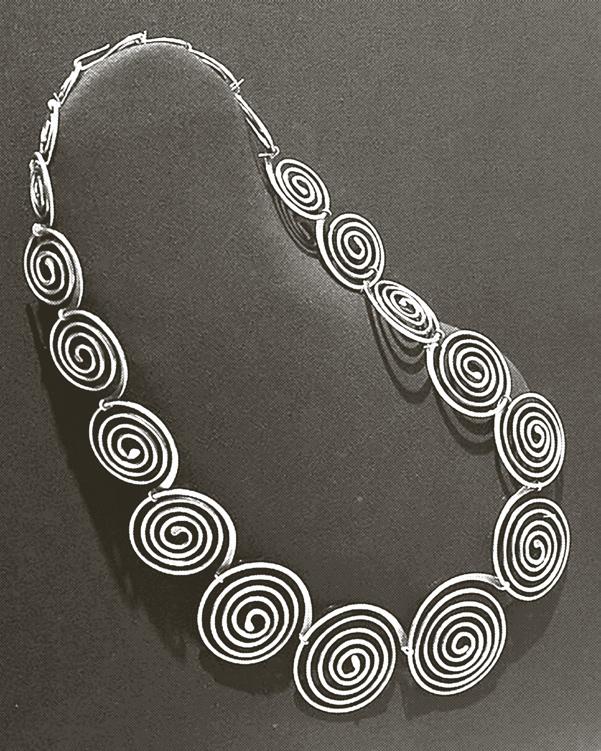
12. See Cindi Strauss, Ornament as Art: AvantGarde Jewelry from the Helen Williams Drutt Collection (Stuttgart, Germany: Arnoldsche Verlagskontor, 2007); Makers: The History of Studio Craft. (Raleigh: University of North Carolina Press, 2010); Crafting Modernism: Midcentury American Art and Design. Jeannine Falino, ed. (New York: Abrams, 2011).
to incorporate BIPOC makers, their histories, and understudied programs and institutions. The recentering of avantgarde jeweler Art Smith (1917–1982), for instance, in various survey projects such as Ornament as Art (CRF ’05), and Crafting Modernism (CRF ’13), is a collective example of historicizing a pioneering Black metalsmith, signposting his importance for new audiences and younger generations of practitioners and curators who may not ever have been introduced to his work.12
In recent years, glass artists have been particularly keen to build a more robust, collective framework for educating each other and their students about their own networks, histories, and opportunities. For instance, Glass Education Exchange (GEEX) (CRF ’22), spearheaded by Helen Lee who teaches at University of Wisconsin, Madison—a “legacy program” in studio glass—established itself in
2001 as a resource-sharing nonprofit that offers a yearly lineup of talks via Zoom, listservs aimed at educators, and affinity groups specifically aimed at BIPOC practitioners and artists.13 Another project in this vein is Disclosure: The Whiteness of Glass (2021–2024) (CRF ’21), which was a wide-ranging curatorial project by a trio of artists known as Related Tactics (Michele Carlson, Weston Teruya, and Nathan Watson), seeking to critique the exclusionary histories of studio glass and its related institutions while simultaneously making space for BIPOC makers and thinkers. These efforts have been a means to recenter often marginalized makers while simultaneously offering new ways of thinking, teaching, and collaborating.
Historical Reenactment
Revivalism has been a key attribute of modern craft: a contemporary renewal of a skilled craft that has fallen into neglect, or has been overtaken by mechanization, such as lacemaking or stained glasswork.14 This category is largely occupied by artists and scholars who are engaged in historical materials research, reinterpreted and expanded upon for contemporary audiences. Through skilled woodworking, BA Harrington (CRF ’20) utilizes early American furniture to explore what she calls “proto-feminist furniture forms,” remaking and expanding
13. Initiated by Harvey Littleton, University of Wisconsin had the first U.S. degree-granting program in glassworking, starting with an independent study course in 1962, followed by the storied Toledo Museum of Art workshops offered by Littleton and Dominic Labino in March and June of 1962. The first UW degree in glass was granted in 1964.
14. See Revivals! Diverse Traditions 1920–1945: The History of Twentieth-Century American Craft. Janet Kardon and Ralph T. Coe, eds. (New York: American Craft Museum, 1994). 13
15. BA Harrington, “Suite Américaine,” Grant Abstract, Craft Research Fund, 2020. https://www. centerforcraft.org/ recipient/2020-craftresearch-fund-artistfellowship-ba-harrington 16. Co-directed by lung, Otto Von Busch, and Sara Clugage, Camp CARPA took place from October 13–16, 2013, in Joshua Tree, California. See Marci Rae McDade, “Camp CARPA: Craftivism in the Desert.” Surface Design Association, April 7, 2014. https://www. surfacedesign.org/campcarpa-craftivism-in-thedesert/
their usage through a conceptual premise, such as a 17th-century dowry chest set on rockers, like a cradle, merging marriage and maternity into a single object to comment upon the boxed-in sensibility of women’s social roles in colonial New England.15

Textiles have also become an area of intensive focus for materials-driven research. carole frances lung (CRF ’12) appropriated the militarism of the Cold War, reenacting the Defense Advanced Research Projects Agency (DARPA), established in 1958, a branch of the U.S. Department of Defense pioneering technology, resources, and materials research to benefit national security. Lung’s spoof swapped out “Defense” in favor of “Craft,” sponsoring a three-day workshop in 2013 for a group of 10 artists, called Camp CARPA, and enacted in Joshua Tree, California.16
Reporting in hand- and homemade uniforms, participants collectively gathered to produce tents, flags, and other wartime textiles that promoted peace, love, and skillsbased learning. Contrary to lung’s imaginative propaganda, Eliza West (CRF ’19) recreates historically specific textiles, such as the work she did in her MA thesis to understand flannel and woolen garmenting practices, and specifically, the cloth finishers known as “fullers” working in Northeast mills, which worked to full (felt and shrink) the cloth. As part of her research, West conducted materially driven experiments, engaging in historically hand-based felting practices, as a means of querying the social and gendered history of garmenting labor, construction, and usage.

GATHERING Together
Craft Within Communities
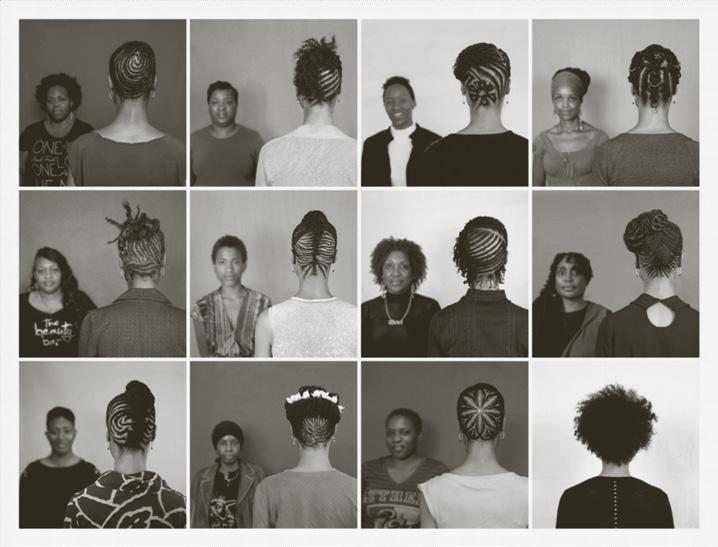
Craft has always been communitydriven, invested in collective skillbuilding and transmitting deep pride in learning to make objects and tools by hand, for both use and beauty. Long before the term social practice —an artistic strategy that centers community engagement— came into widespread use, craft flourished in nonhierarchical situations: community centers, summer workshops, park districts, and primary and secondary school enrichment. In eschewing medium purity, communityminded artists seek to create transformative handworking experiences for everyday people. For instance, in The Hair Craft Project (2013), artist Sonya Clark (CRF ’13) posited the idea that intricate Black hairstyles are not only expressive, but that they are also indicative of the structural
integrity and design sensibility of textiles. This project was a cross-pollination between the art museum and the hair salon, creating a community that acknowledged the talents of 12 Black stylists in Richmond, Virginia, by asking them to create skill-intensive styles, and then transfer these more permanently onto small canvases using thread, as a document of their artistic practice.17
Another such project was “Women and Woodworking” (CRF ’19), initially conceptualized by three artists working in that medium, Phoebe Kuo, Laura Mays, and Deirdre Visser. Their project evolved into a juried exhibition helmed by Mays and Visser, titled Making a Seat at the Table: Women Transform Woodworking , and held at the Museum of
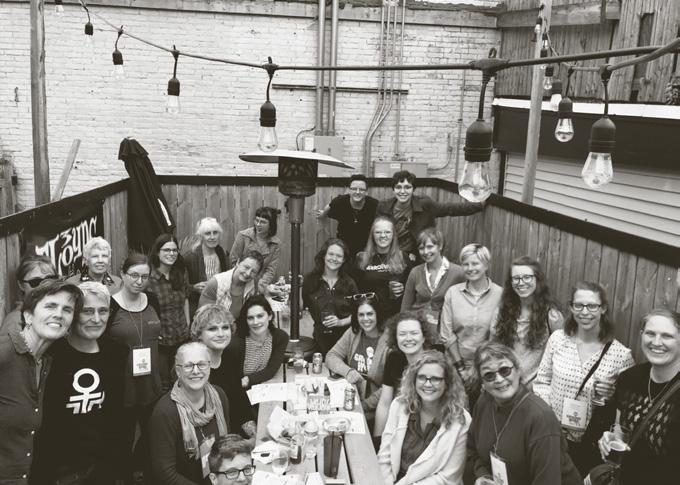
Art in Wood in Philadelphia.18 Working across furniture, sculpture, and installation, they brought together a group of 43 contemporary women and gender nonconforming
17. The Hair Craft Project was staged over several months at the 1708 Gallery in Richmond, VA, culminating in a number of events, discussions, and artworks. Its eleven canvases, known as “Hairstyles on Canvas,” now reside in the collection of the Museum of Fine Arts, Boston, Accession No. 2015.2923.1-11.
18. Organized by Laura Mays and Deidre Visser, Making a Seat at the Table: Women Transform Woodworking, was curated via a jury that also included Jennifer-Navva Milliken, Cheryl Riley, and Tom Loeser. The show presented 43 artists from across North America and was on view at the Museum of Art in Wood from October 4, 2019 to January 25,2020. 17
19. Deidre Visser, Joinery, Joists, and Gender: A History of Woodworking for the 21st Century (London and New York: Routledge, 2022).
artists with ecologically minded practices. Invested in socially engaged building and making, rather than individual mastery, women woodworkers have doggedly reworked the value system of their medium, solidifying their presence—even dominance—in a medium historically gendered male. The show expanded even further, morphing into an important book, the medium’s first comprehensive history, written by Visser: Joinery, Joists, and Gender: A History of Woodworking for the 21st Century (2022).19
Craft is Queer
One of the primary ways in which American craft continues to set itself apart from the elitism of the art world is its aptitude for spirited welcome: Craft might be cliquey in its media specificity, but it is not exclusionary. Weekend classes and summer workshops are open to all: Amateurs have always sustained the field. Certainly, there have always been gay and lesbian craftspeople, out to varying degrees, and perhaps disavowing
the label “queer” altogether, since that term was, for most of the 20th century, an epithet. The 21st century has ushered in an unprecedented growth, celebration, and acknowledgement of queer aesthetics and practitioners.
Craft artists have embraced the porousness between craft media, sexual identity, and gender expression: They have done this by refuting the divisions and gatekeeping endemic to academic art departments and residency programs regarding media specificity, access to facilities, and the kinds of curricula offered to students. The woodshop—and the ceramics, metals, glass, and textile studios—have subsequently transformed into havens for queer art students throughout North America, and craft scholarship itself has been at the forefront of this welcome change. An embrace of queer and nonbinary thinking is also a clear disavowal of the craft field’s historical privileging of men as dominant actors on its main stage, and a desire to consciously recast and change the plot lines going forward.
Curator Danny Orendorff’s (CRF ’13) group exhibition, Loving After Lifetimes of All This (2013–15) , which opened at Charlotte Street Foundation in Kansas City, Missouri, and traveled to the Center for Craft, offered a mixedmedia extravaganza of 15 artists across a range of generations and gender expressions. A poetic reflection of what he

calls “marginalized cultural histories,” it explored queer world-building and ideas of self-actualization—manifesting what one needs in the world—through craft as a primary lifeline and throughline, expanding the definition of what handwork could look like, including scrapbooking and homeopathy, for instance.20
Three anthologies, Extra/Ordinary: Craft Culture and Contemporary Art (2011) (ed. Maria Elena Buszek, CRF ’08), Nation Building: Craft and Contemporary Culture (2015) (ed. Nicholas Bell, CRF ’12) and The New Politics of the Handmade: Craft, Art, and Design (2021) (eds. Anthea Black and Nicole Burisch, CRF ’14), all include an extended engagement with queer-inflected content.21 The fact that there are over 12 authors apiece in each of these three volumes showcases that we have come a long way from the photo-dominant, content-lite catalog. There is a robust grouping of writers and thinkers engaged with craft as both subject, object, and verb.
Of these three, Buszek’s methodology in the earliest, Extra/Ordinary , itself is arguably queer: She maintains that the “many artists drawing on craft culture do so in ways that revel in its boundary-crossing potential.” 22
20. Alice Thorston, “Curator Danny Orendorff Bids KC an Impressive Goodbye with His Final Show for Charlotte Street.” The Kansas City Star (December 14, 2014), https://www. kansascity.com/entertainment/visual-arts/article4425807.html
21. Extra-Ordinary: Craft and Contemporary Art. Maria Elena Buszek, ed. (Durham and London: Duke University Press, 2011); Nation Building: Craft and Contemporary American Culture. Nicholas R. Bell, eds. (London: Bloomsbury, 2015); The New Politics of the Handmade: Craft, Art and Design. Anthea Black and Nicole Burisch, eds. (London: Bloomsbury, 2021).
22. Maria Elena Buszek, “Introduction: The Ordinary Made Extra/ Ordinary,” Extra-Ordinary: Craft and Contemporary Art (Durham and London: Duke University Press, 2011), pp. 12.
In this way, her volume aimed to redress the many ways in which conceptual artists often appropriated craft media as a shorthand for subversive and populist intent, associating it with ideologies of rebellion and mass culture.
In this same volume, Black and Burisch jointly authored an essay on curatorial strategies for craftivism , a term that embraces the politicization of craft-driven activism, setting itself as an oppositional strategy that rejects the global capitalism of the art market.23 Six years later, their own volume, The New Politics of the Handmade , introduces craftivism as primary subject matter, with an assumption of the art/craft hybridity that Buszek had earlier posited. Further, the contributing writers wade into intensive and productive ethical debates around consumer culture, labor practices, class, authenticity, queerness, racial and ethnic identity, and what the duo call “craftwashing”— using craft to leverage a particular value, such as wholesomeness.
23. Anthea Black and Nicole Burisch,“Craft Hard Die Free: Radical Curatorial Strategies for Craftvism.” Ibid, pp. 204-221.
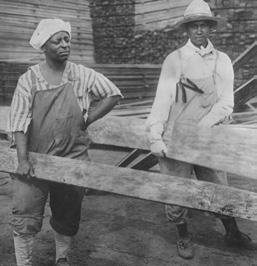
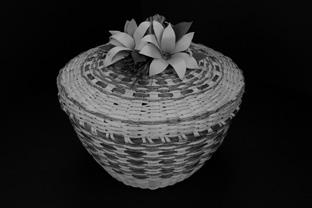
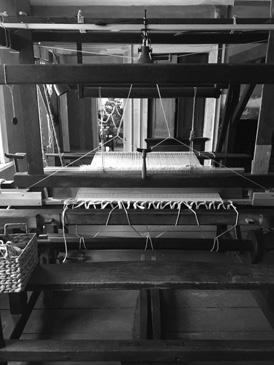
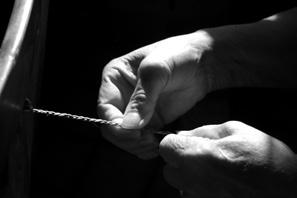
Conclusion
The Craft Research Fund has been at the forefront of elevating the cultural significance of craft. Through its grant program, the Center for Craft continues to fulfill its mission to introduce U.S. craft to a wider public while serving a diverse set of stakeholders: its artists, curators, and scholars. The 20th-century investment in craft was dominated by a desire to educate the consumer, creating a sustained economic market for American craftspeople. By way of comparison, the 21st century’s investment has been to educate the art and academic worlds about craft’s core ideologies of community, skill sharing, and inclusion— values in direct opposition to the capitalist-inflected individualism of the museum solo show or the single-artist monograph. Craft’s unprecedented growth and current popularity have recently aligned with the purported values of social consciousness and diversity that have become commonplace in the larger global contemporary art market.
While forging, shaping, and gathering are some of the most common metal- and glassworking techniques, they are terms that also underscore the near-constant adaptation of the forger, welder, gaffer, or glassblower in relation to the fluidity of their materials, and the fearless embrace of transformation that the craft process demands. As a stillyoung field, craft research and its primary benefactor, the Craft Research Fund, will continue to mirror the openness and permeability of its artists and makers.
COVER:
Clockwise from top left: Drape of menswear flannel. Photo credit: James Schneck/Winterhur Museum; Plate, c. 1900. Artist unknown (American, 19th–20th century). Glass. Gift of Bessie Bennett, 1916.374. Collection of The Art Institute of Chicago; Cloth on Justin Squizzero’s loom. Photo credit: Eliza West; Jar-shaped Basket, c. 1900–1910. Native North America, Great Basin, California, Death Valley, Timbisha (Panamint) Shoshone. Willow, bulrush, yucca root; coiled (3 rods). Overall: 14.3 × 22 cm (5 5/8 × 8 11/16 in.).
Presented by William Albert Price in memory of Mrs. William Albert Price, 1917.466. Collection of The Cleveland Museum of Art; Miniature basket by Jennifer Neptune (Penobscot). Photo credit: Peter Dembski; Ash and sweetgrass basket by Molly Neptune Parker (Passamaquoddy). Photo credit: Peter Dembski; Spoon, ca. 1905. Theodore B. Starr (American, New Rochelle, New York, 1837–1907, Ridgefield, Connecticut). Silver, 4 ¾ × 2 in. (12.1 × 5.1 cm). Made in New York, New York, United States. Gift of Martin Eidelberg, 2016.741.7. Collection of The Metropolitan Museum of Art; 2022 Craft Research Fund–Artist Fellowship recipients Charlie Ryland and Robell Awake. Photo credit: Dustin Chambers; Juliette Caron on ladder. Photo credit: Joachim Case; Hair Craft Project with Jamilah, 2014. Photo credit: Sonya Clark;
Florence Benedict (Mohawk) scraping ash for basketry. Photo credit: Peter Dembski; Heart Mountain Relocation Center, Heart Mountain, Wyoming. A class of early teenage students 1/11/1943. Photo credit: National Archives photo no. 539228; Armchair, ca. 1904. J. S. Ford, Johnson and Company (American, 1867–1902). Oak, poplar; 31 ½ × 20 ⅜ × 25 ½ in. (80 × 51.8 × 64.8 cm). Made in Chicago, Illinois, United States. Purchase, Mr. and Mrs. David Lubart Gift, in memory of Katherine J. Lubart, 1944–1975, 1981.156.1. Collection of The Metropolitan Museum of Art; Florence Benedict (Mohawk) braiding sweetgrass. Photo credit: Peter Dembski; Women at work in lumber yards. Y.W.C.A., photographer. February 5, 1919. National Archives photo no. 522867; Jug, United States, c. 1790–1830. Artist unknown. Earthenware, 8 ½ × 5 ⅛ in. Thorne Rooms Exhibition Fund, 1946.775. Collection of The Art Institute of Chicago; Camp CARPA Future Force Geo Speculators (Christine Tarkowski, carole frances lung, and Ellen Rothenberg) survey the site at Joshua Tree, October 2013. Photo credit: Marci Rae McDade.
PAGE 3:
Spoon, ca. 1905. Theodore B. Starr (American, New Rochelle, New York, 1837–1907, Ridgefield, Connecticut). Silver, 4 ¾ × 2 in. (12.1 × 5.1 cm). Made in New York, New York, United States. Gift of Martin Eidelberg, 2016.741.7. Collection of The Metropolitan Museum of Art; Armchair, ca. 1904. J. S. Ford, Johnson and Company (American, 1867–1902). Oak, poplar; 31 ½ × 20 ⅜ × 25 ½ in. (80 × 51.8 × 64.8 cm). Made in Chicago, Illinois, United States. Purchase, Mr. and Mrs. David Lubart Gift, in memory of Katherine J. Lubart, 1944–1975, 1981.156.1. Collection of The Metropolitan Museum of Art; Jug, United States, c. 1790–1830. Artist unknown. Earthenware, 8 ½ × 5 ⅛ in. Thorne Rooms Exhibition Fund, 1946.775. Collection of The Art Institute of Chicago; Jar-shaped Basket, c. 1900–1910. Native North America, Great Basin, California, Death Valley, Timbisha (Panamint) Shoshone. Willow, bulrush, yucca root; coiled (3 rods). Overall: 14.3 × 22 cm (5 5/8 × 8 11/16 in.). Presented by William Albert Price in memory of Mrs. William Albert Price, 1917.466. Collection of The Cleveland Museum of Art; Plate, c. 1900. Artist unknown (American, 19th–20th century). Glass. Gift of Bessie Bennett, 1916.374. Collection of The Art Institute of Chicago.
PAGE 10:
Cover of A Dark, A Light, A Bright: The Designs of Dorothy Liebes, edited by Susan Brown and Alexa Griffith Winton. Yale University Press, 2023.
PAGE 12:
Sailko, photo taken on October 30, 2016, Metalware in the Milwaukee Art Museum. Wikipedia, https://en.wikipedia. org/wiki/Art_Smith_ (jeweler)#/media/File:Art_ smith,_spirali_in_ diminuzione,_1958_ca.jpg. Licensed under CC BY 3.0.
PAGE 14:
Marci Rae McDade, L Vinebaum, Anna Gray, and Ryan Paulsen sew the Camp CARPA flag, designed by L Vinebaum. October 2013. Photo credit: Marci Rae McDade.
PAGE 15:
Drape of menswear flannel. Photo credit: James Schneck/Winterthur Museum.
PAGE 16:
Hair Craft Project with (left to right, from top left): Chaunda King, Marsha Johnson, Jameika Pollard, Ife Robinson, Ingrid Riley, Kamala Bhagat, Anita Hill Moses, Dionne James Eggleston, Natasha Superville, Nasirah Muhammad, Jamilah Williams, Ife Robinson, 2014. Photo credit: Sonya Clark.
PAGE 17:
Gathering of women and gender nonconforming makers at the Furniture Society Conference, Milwaukee, 2017. Photo credit: Unknown.
PAGE 19: Installation of work by Tanya Aguiñiga in the exhibition Loving After Lifetimes of All This, curated by Danny Orendorff. Center for Craft, 2015. Photo credit: Center for Craft.
PAGE 22:
Women at work in lumber yards. Y.W.C.A., photographer. February 5, 1919. National Archives photo no. 522867; Ash and sweetgrass basket by Molly Neptune Parker (Passamaquoddy). Photo credit: Peter Dembski; Cloth on Justin Squizzero’s loom. Photo credit: Eliza West; Florence Benedict (Mohawk) braiding sweetgrass. Photo credit: Peter Dembski.

About Jenni Sorkin
Jenni Sorkin is Professor and Chair of History of Art & Architecture at University of California, Santa Barbara, and is affiliated in the Art, Feminist Studies, History, and Media Arts and Technology Departments. She writes on the intersections between gender, material culture, and contemporary art, working primarily on women artists and underrepresented media. Her books include: Live Form: Women, Ceramics and Community (University of Chicago, 2016), Revolution in the Making: Abstract Sculpture by Women Artists, 1947-2016 (Skira, 2016) and Art in California (Thames & Hudson, 2021), as well as numerous essays in journals and exhibition catalogs. She is currently the Co-Executive Editor of the born-digital, open access, peer-reviewed journal, Panorama: the Association of Historians of American Art. She is currently serving a five-year term on the University of California Press Editorial Board, and is also a long-time member of the Editorial Board of the Journal of Modern Craft. She received her PhD in the History of Art from Yale University. She is the recipient of fellowships from the American Council of Learned Societies, the Center for Craft, the Getty Research Institute, and the Smithsonian American Art Museum.
About the Craft Research Fund
From its start, Center for Craft has been at the forefront of legitimizing craft as a field of study. In 2002, it hosted its first Craft Think Tank to imagine new ways of understanding craft.
The vision from that convening took root in 2005 with the launch of the Craft Research Fund—now the Center’s longest-running grant program and a cornerstone of its national impact. Over the past 20 years, the Fund has awarded nearly $2 million to support more than 250 projects nationwide focused on new and interdisciplinary research about craft in the United States.

The Center for Craft is grateful for the Windgate Foundation’s investment in the establishment of this program and their generosity to the craft organizations and individuals that bring craft research to life.
About Center for Craft Center for Craft increases access to resources that catalyze artists and scholars nationwide. Proudly based in Asheville, it has been at the center of the conversation about craft since 1996.

